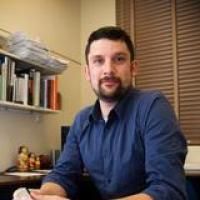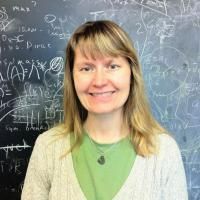Monitoring the SNS basement neutron background with the MARS detector
Date
2021-12-05
Journal Title
Journal ISSN
Volume Title
Repository Usage Stats
views
downloads
Abstract
We present the analysis and results of the first dataset collected with the MARS neutron detector deployed at the Oak Ridge National Laboratory Spallation Neutron Source (SNS) for the purpose of monitoring and characterizing the beam-related neutron (BRN) background for the COHERENT collaboration. MARS was positioned next to the COH-CsI coherent elastic neutrino-nucleus scattering detector in the SNS basement corridor. This is the basement location of closest proximity to the SNS target and thus, of highest neutrino flux, but it is also well shielded from the BRN flux by infill concrete and gravel. These data show the detector registered roughly one BRN per day. Using MARS' measured detection efficiency, the incoming BRN flux is estimated to be $1.20~\pm~0.56~\text{neutrons}/\text{m}^2/\text{MWh}$ for neutron energies above $\sim3.5$ MeV and up to a few tens of MeV. We compare our results with previous BRN measurements in the SNS basement corridor reported by other neutron detectors.
Type
Department
Description
Provenance
Subjects
Citation
Permalink
Collections
Scholars@Duke

Phillip S. Barbeau
Professor Barbeau’s research interests are predominantly in the fields of neutrino and astroparticle physics. His efforts are focused on (but not limited to) three major areas of research: studying the physics of coherent neutrino-nucleus scattering; novel searches for the dark matter in our universe; and searches for zero neutrino double beta decay. The unifying aspect of the work is the common need for new and creative detector development in order to solve some of the “hard” problems in low-background rare-event detection.

Kate Scholberg
Prof. Scholberg's broad research interests include experimental elementary particle physics, astrophysics and cosmology. Her main specific interests are in neutrino physics: she studies neutrino oscillations with the Super-Kamiokande experiment, a giant underground water Cherenkov detector located in a mine in the Japanese Alps. Super-K was constructed to search for proton decay and to study neutrinos from the sun, from cosmic ray collisions in the atmosphere, and from supernovae. On Super-K, Prof. Scholberg's primary involvement is with the atmospheric neutrino data analysis, which in 1998 yielded the first convincing evidence for neutrino oscillation (implying the existence of non-zero neutrino mass).
One of the most important questions that we may be able to answer with neutrino oscillation experiments over the next couple of decades is the question of CP (charge conjugation-parity) violation in neutrinos. It's now well known that processes involving quarks violate CP symmetry; it's suspected that the same is true for leptons (such as neutrinos), but leptonic CP violation is as yet unobserved. We hope that understanding of CP violation, along with knowledge of the other neutrino parameters, may lead to insight into the question of the observed matter-antimatter asymmetry of the universe. The long-term program neutrino oscillation physics aims to answer these questions.
The next steps in neutrino oscillation research involve artificial beams of neutrinos sent hundreds of kilometers from accelerator laboratories to underground detectors. The T2K ("Tokai to Kamioka") high-intensity beam experiment sends neutrinos 300 km from an accelerator at the J-PARC facility in Japan to Super-K, and is currently exploring unknown oscillation parameters. The DUNE (Deep Underground Neutrino Experiment) is a planned next-generation U.S.-based international experiment designed to observe neutrinos beamed from Fermilab to a large liquid argon detector at a new underground facility in South Dakota. One of Prof. Scholberg's particular interests on DUNE is the detector's sensitivity to the huge bursts of neutrinos from core-collapse supernovae.
Prof. Scholberg serves as spokesperson of COHERENT, a multi-detector experiment with the primary physics goal of measuring CEvNS (Coherent Elastic Neutrino Nucleus Scattering) using the high-intensity neutrinos produced by the Spallation Neutron Source at Oak Ridge National Laboratory in Tennessee. CEvNS was measured for the first time by the collaboration in 2017.
Prof. Scholberg was a co-founder of SNEWS, the SuperNova Early Warning System, an inter-experiment collaboration of detectors with Galactic supernova sensitivity. Neutrinos from a core collapse will precede the photon signal by hours; therefore coincident observation of a burst in several neutrino detectors will be a robust early warning of a visible supernova. The goals of SNEWS are to provide the astronomical community with a prompt alert of a Galactic core collapse, as well as to optimize global sensitivity to supernova neutrino physics.
Unless otherwise indicated, scholarly articles published by Duke faculty members are made available here with a CC-BY-NC (Creative Commons Attribution Non-Commercial) license, as enabled by the Duke Open Access Policy. If you wish to use the materials in ways not already permitted under CC-BY-NC, please consult the copyright owner. Other materials are made available here through the author’s grant of a non-exclusive license to make their work openly accessible.
